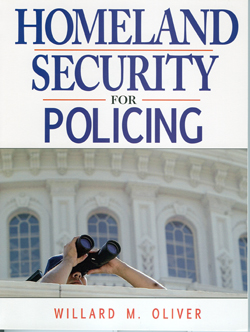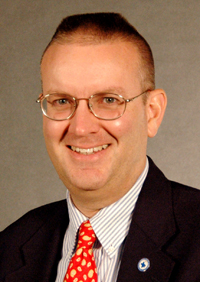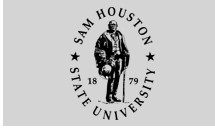Book Addresses Police Role in Homeland Security
 Five years out from 9/11, while there has been much discussion
regarding the police role in protecting the homeland, there has
been little direction or discussion as to what specific role
the police should play under Homeland Security. Five years out from 9/11, while there has been much discussion
regarding the police role in protecting the homeland, there has
been little direction or discussion as to what specific role
the police should play under Homeland Security.
This is according
to Willard M. Oliver, an associate professor of criminal justice
at Sam Houston State University, also a former policeman, military
policeman, and decorated veteran of the Persian Gulf War.
Oliver
has written a book titled Homeland Security for Policing (Prentice Hall 2007).
Its publisher believes it's the only
book of its kind, examining the events that led up to this new
policing era, the relationship between national, state and local
agencies, and specific strategies, operations and tactics that
can be used to prevent and protect against future threats.
"We have come a long way since
9/11 in terms of awareness of both domestic and international
terrorism and identifying how we need to be more prepared," said
Oliver, "But we have a long way to go."
Personal
protection equipment for police officers is lacking and has been
identified as a key factor in enhancing future responses, he
said. Improvements are needed in the collection of raw information
by police and turning it into intelligence by specially-trained
intelligence units.
 |
Willard M. Oliver |
Mutual aid agreements with surrounding
agencies is another area that has been identified as crucial
to future responses, he said, but the lack of effectiveness in
responding to Hurricanes Katrina and Rita illustrated shortcomings.
The coordination must come between
local and state police agencies, health care professionals, the
Red Cross, local universities and colleges, and many other public
and private sector entities.
The Federal government has issued a
National Response Plan for natural and man-made disasters, mandating
the use of an Incident Command System (ICS) in many cases.
"Many agencies were not aware
of the National Response Plan and although many agencies already
used the Incident Command System, it was simply not enough," said
Oliver. "This deficiency was highlighted by Hurricane Katrina
one year ago. Despite having a plan in place, not everyone knew
the plan or how it worked."
Oliver's book presents a framework for understanding the
role police play in Homeland Security. Special emphasis is placed
on understanding 9/11, the entire framework of Homeland Security
in the U.S. and the unique issues faced by local law enforcement.
It provides a strategic focus that addresses state and local
level responses to Homeland Security as well as responses at
the federal level, discusses the specific issues facing police
with respect to Homeland Security and connects the Homeland Security
and criminal justice fields.
Also, it covers how and why policing has changed in the last
decade, presents a fuller understanding of how the concept of
Homeland Security developed, what it means for the police, and
where within the scope of a national Homeland Security framework
the police fit.
The book discusses the activities of local police within the
context of both state and national Homeland Security policies.
It emphasizes the integral web of dependency and connected nature
of these agencies; discusses techniques for information gathering,
risk and threat assessments, intelligence analysis, preparation
for mass disasters (including Weapons of Mass Destruction), risk
management, information sharing (both laterally and vertically),
pre-emption of terrorism, and employment of an Incident Command
System under the National Incident Management System.
It also helps identify the new roles, new responsibilities,
and new tasks of the police in the post 9/11 environment, and
is suitable for law enforcement professionals, students of policing
and security studies, and anyone with an interest in Homeland
Security.
Oliver is also an instructor in the Incident Command Simulation
Training (INCOSIT) that is conducted in the Law Enforcement Management
Institute of Texas (LEMIT) center at Sam Houston State and has
helped to train Texas law enforcement, health professionals,
and school administrators in the Incident Command System.
Currently a major in the United States Army Reserves,
Military Police Corps, he is a graduate of military
police (enlisted) basic and advanced training, military police
officer basic and advanced officer training, the Combined Arms
Services Support School, and is a recent graduate of the Command
and General Staff College.
His research interests are centered on policing and public policy
issues, and he is the author of numerous peer-reviewed journal
articles, books, and magazine articles related to both topics.
"Police departments need training,
they need equipment, and they need to concentrate on establishing
police intelligence units and adopting the Incident Command System," said
Oliver. "All of this
takes time and money, but at least we are heading down the right
road in terms of being better able to respond to future disasters,
whatever their nature."
—END—
SHSU Media Contact: Frank Krystyniak
Sept. 13, 2006
Please send comments, corrections, news tips to Today@Sam.edu.
|


